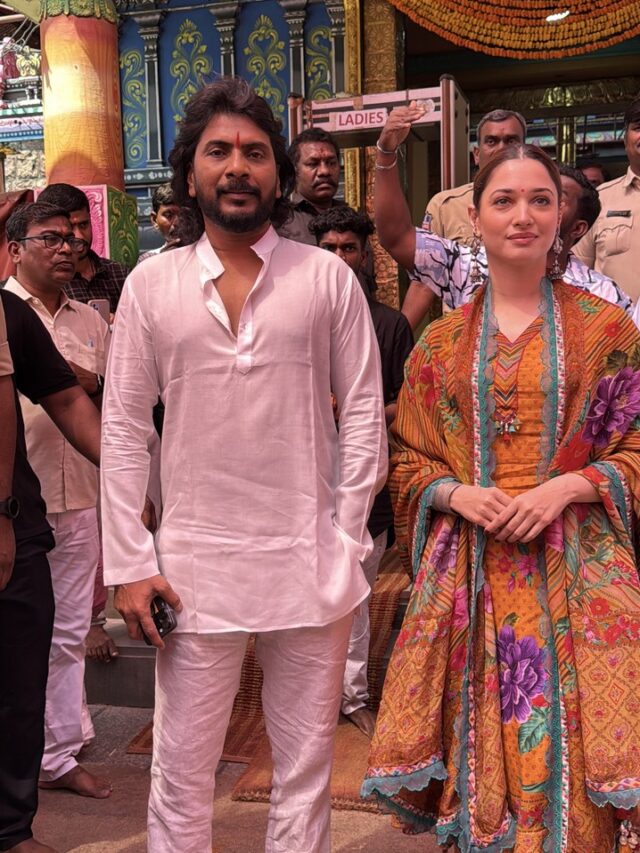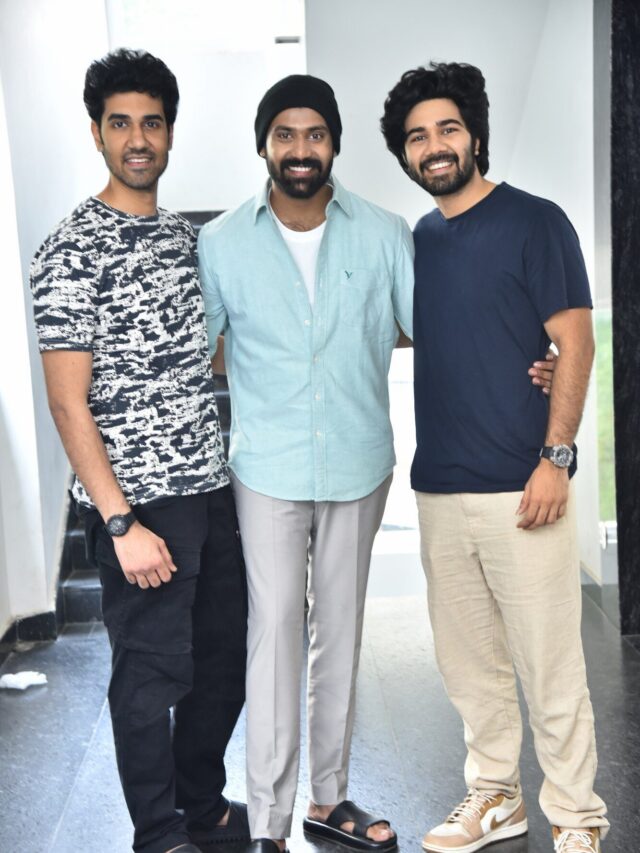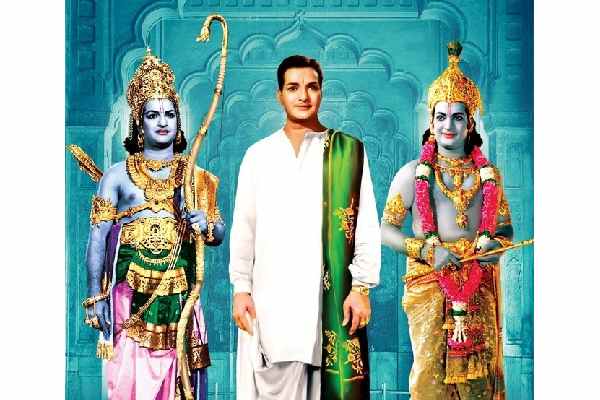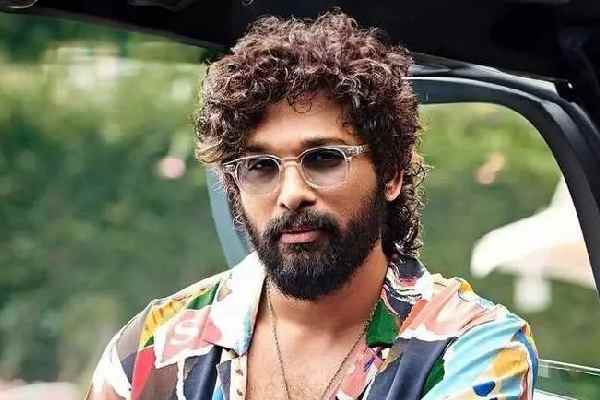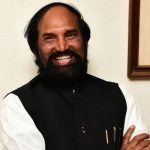From superstar of Telugu films to a regional satrap who redefined political culture in united Andhra Pradesh, Nandamuri Tarakarama Rao’s real life had all the color and trappings of his onscreen roles.
While only a few leaders could match the massive popularity he enjoyed, perhaps there is no one with a demigod-like status and whose contributions to people of his region and the influence he had on the state politics are felt even 28 years after his death.
Popular as NTR, the actor-politician had a multi-faceted and colourful personality who enjoyed the status of a demigod for his portrayal of mythological characters on screen and had a Phoenix like rise to change the political landscape of Andhra Pradesh forever.
A flag-bearer of Telugu self-respect, he dominated the film world and politics like a colossus and gave Telugus a distinct identity.
Though dubbed a “maverick” by many for his political theatrics, he was a leader from the heart who extended his onscreen image to become a real life hero for his people.
The fact that NTR still casts a large shadow over the politics of Telugu states speaks volumes about the difference he made to people and the political culture.
The legendary actor and three-time chief minister of undivided Andhra Pradesh still lives in the heart of the Telugu people for whom he had become a symbol of self-respect.
From storming to power within a year after floating Telugu Desam Party (TDP) to end the single-party rule of Congress and challenging mighty Indira Gandhi and from several pro-poor schemes to giving a political identity to the backward classes, NTR will be remembered for many watershed moments.
“NTR was a man of fascinating contradictions. He was commanding personality but resorted to baffling theatrics and bewildering sartorial predilections. He was considered orthodox by many, but he displayed radical tendencies that caused a furore in the establishment,” writes senior journalist Ramesh Kandula in the foreword of his book’ Maverick Messiah’, a political biography of N. T. Rama Rao.
“Though outwardly religious, he was staunchly secular. A leader who fought on the plank of regional aspirations, he remained a committed nationalist throughout. A man of no known ideological persuasions, he was able to come up with his own brand of populism and clearly enunciated doctrine on Centre-state relations,” writes the author.
He described NTR as the most colourful personality in the drab world of politics who never ceased to amaze because of his complexities.
“The element of drama was deeply embedded in his rather momentous life. In his last days, the personal and political got merged in his life in an unusual mix, resulting in a tempestuous climax that has few parallels in modern Indian politics,” writes Ramesh Kandula.
Born on May 28, 1923 to a peasant family in a remote village in Krishna district of the present day Andhra Pradesh, NTR worked hard to come up in life. When he was 20, he was married to Basvatarakam, daughter of his maternal uncle.
During his college days in Guntur, he developed interest in acting. However, he had to take up the job of sub-registrar in 1947 due to his poor family circumstances. Determined to carve a niche for himself in the film industry, he moved to Madras where the Telugu film industry was based and thus began his journey to stardom.
The huge success of movies like Pathala Bhairavi, Malliswari, Missamma and Maya Bazar in 50s helped him establish as a leading actor. With a variety of roles in the 1960s and 1970s, he became a house-hold name. The mythological characters played by him made him a demigod for Telugu-speaking people.
The superstar vowed to take up public services after celebrating his 60th birthday in 1982. The plans later evolved into the launch of a political party. The author of ‘Maverick Messiah’ wrote that living in Madras, NTR witnessed how Dravidian parties were able to protect the interests of Tamil Nadu but in Andhra Pradesh Congress party was treating its chief ministers as doormats.
NTR was influenced by his friend M. G. Ramchandran (MGR), who was already chief minister of Tamil Nadu. NTR too vowed to work for Telugu renaissance and announced the launch of the Telugu Desam Party (TDP) on March 29, 1982, much ahead of the May 28 deadline.
The new party took the state by storm as NTR embarked on a state-wide tour on his ‘Chaitanya Ratham’ addressing Telugus to awaken them. Riding on the massive popularity and with his unique style and new political idiom, he struck an instant emotional chord with the people.
In the elections held in January 1983, NTR created history by storming to power with 198 seats in the 294-member Assembly. He knocked out Congress, which for the first time since Andhra Pradesh’s formation, had to be content with 60 seats.
After taking the reins of power in his hands, NTR announced a series of schemes to win people’s hearts. The most popular was his Rs 2-a-kg scheme. “Roti, Kapda aur Makan was the slogan of those times and NTR addressed the most basic need of Roti to alleviate starvation,” said an analyst.
“Since the time NTR ventured into politics he had a unique style and welfare was his top agenda. From launching Rs 2 per kg rice scheme, housing for the poor, even clothing for the poor were among his popular welfare schemes,” said another analyst Palwai Raghavendra Reddy.
The coup against NTR in August 1984 by Nadendla Bhaskar Rao with the support of Congress party and the governor dismissing NTR government without giving him a chance to prove his majority in Assembly triggered the save democracy movement. The manner in which NTR fought and came back as the chief minister made him more popular and he grabbed the national attention.
However, five months after his reinstatement, NTR decided to seek a fresh mandate and recommended dissolution of the Assembly. The TDP swept the polls once again, this time winning 202 out of 250 seats it contested. NTR became invincible and the next five years saw him bringing many landmark reforms in administration.
Political analyst Jinka Nagaraju feels that the unique contribution of NTR to Telugu politics is the way the electoral battle is fought in the Telugu regions.
“He effected a structural change in the politics that heralded a new phase which is still governing the politics of Telugu states. With his well thought out strategy NTR’s Telugu Desam Party broke the stranglehold of the Congress on Andhra Pradesh politics. His strategy was to target those sections of society the Congress thought non-existent as a vote bank. These sections are middle castes of the society which are politically called backward castes,” Nagaraju said.
Congress’ winning formula had heavily depended on two extremes Brahmins and SCs. It was a party of extremes. The middle castes had never figured in the electoral framework of the Congress because these castes were divided and had not coalesced into political communities i.e Backward Classes as yet. So, Congress had ignored them, he explained.
“What one should not lose sight of is the fact that many of NTRs initial political advisors were all former socialists influenced by RM Lohia, who believed in the concept of political empowerment of backward castes against the Brahminical Congress. This appeal of targeting a huge mass of Backward Classes looked irresistible for NTR and he experimented with the idea in earnest.”
The analyst recalled that NTR chose active youth from backward castes even though they lacked money and muscle power, as candidates. Many of them won in the election. For the first time dozens of youth from politically unknown families entered the corridors of power. It changed the entire complexion of the Assembly.
“This experiment, for the first time, while crystalizing the political community, namely BCs engendered a sense of unity among these sections. This was further fortified when he created mandals and legislated reservations in the local bodies,” observed Nagaraju.
“Much before V.P. Singh implemented the Mandal Commission Report, NTR had his own means of giving power into the hands of the backward classes. His Telugu Desam Party is arguably the first in the country which had fielded BCs in large numbers in the State Assembly and local body elections. Though NTR was criticised by upper castes over dismantling the Patel-Patwari system in the erstwhile Andhra Pradesh State, he is widely respected by the backward classes and other poorer sections of the society for the reforms he introduced in the State,” said Palwai Raghavendra Reddy.
After five years of Congress rule in between, NTR returned to power with a landslide majority in 1994. NTR was always considered as man of his word, and banning liquor in the state after he returned to power in 1994 was the result of the demand arising from the women.
A senior journalist recalls that after the defeat in 1989 elections, NTR’s family members had abandoned him.
NTR, whose first wife Basvatarakam succumbed to cancer in 1985, was a lonely man. It was at this stage that Lakshmi Parvathi entered his life.
A college lecturer who had separated from her first husband, Lakshmi Parvathi was working on his biography and used to come to his house regularly. They married in 1993 and the rift in the family came into the open after TDP returned to power.
In August 1995, NTR’s son-in-law N. Chandrababu Naidu led a revolt, citing Lakshmi Parvathi’s growing interference in the government and party affairs.
Backed by NTR’s sons and daughters, Naidu became the chief minister. NTR called Naidu a betrayer and vowed to unmask him. Barely five months later, NTR died of cardiac arrest at the age of 72.
Like his film career and politics, NTR’s end was also dramatic.


















